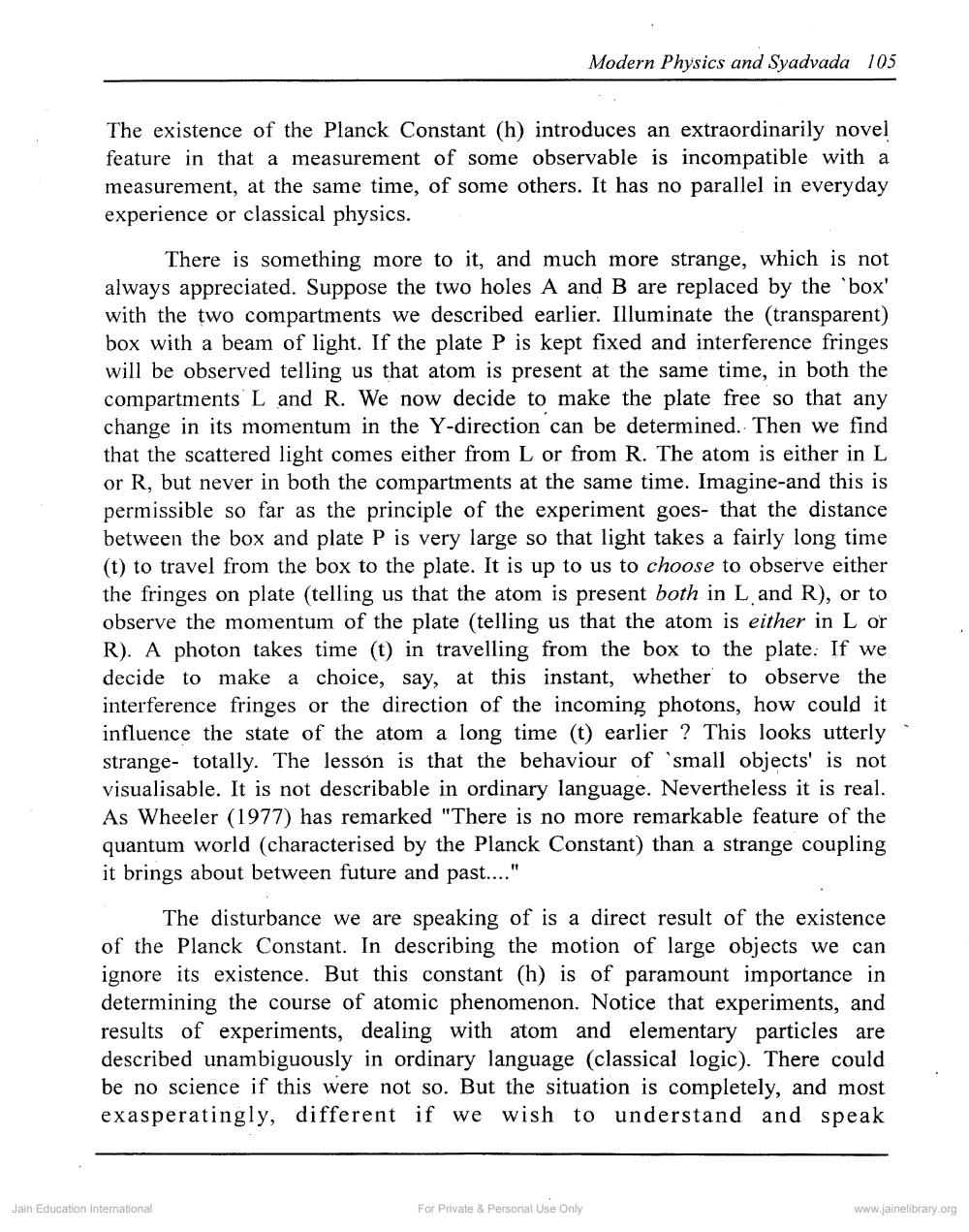________________
Modern Physics and Syadvada 105
The existence of the Planck Constant (h) introduces an extraordinarily novel feature in that a measurement of some observable is incompatible with a measurement, at the same time, of some others. It has no parallel in everyday experience or classical physics.
There is something more to it, and much more strange, which is not always appreciated. Suppose the two holes A and B are replaced by the 'box' with the two compartments we described earlier. Illuminate the (transparent) box with a beam of light. If the plate P is kept fixed and interference fringes will be observed telling us that atom is present at the same time, in both the compartments L and R. We now decide to make the plate free so that any change in its momentum in the Y-direction can be determined. Then we find that the scattered light comes either from L or from R. The atom is either in L or R, but never in both the compartments at the same time. Imagine-and this is permissible so far as the principle of the experiment goes- that the distance between the box and plate P is very large so that light takes a fairly long time (t) to travel from the box to the plate. It is up to us to choose to observe either the fringes on plate (telling us that the atom is present both in L and R), or to observe the momentum of the plate (telling us that the atom is either in L or R). A photon takes time (t) in travelling from the box to the plate. If we decide to make a choice, say, at this instant, whether to observe the interference fringes or the direction of the incoming photons, how could it influence the state of the atom a long time (t) earlier ? This looks utterly strange- totally. The lesson is that the behaviour of 'small objects' is not visualisable. It is not describable in ordinary language. Nevertheless it is real. As Wheeler (1977) has remarked "There is no more remarkable feature of the quantum world (characterised by the Planck Constant) than a strange coupling it brings about between future and past...."
The disturbance we are speaking of is a direct result of the existence of the Planck Constant. In describing the motion of large objects we can ignore its existence. But this constant (h) is of paramount importance in determining the course of atomic phenomenon. Notice that experiments, and results of experiments, dealing with atom and elementary particles are described unambiguously in ordinary language (classical logic). There could be no science if this were not so. But the situation is completely, and most exasperatingly, different if we wish to understand and speak
Jain Education International
For Private & Personal Use Only
www.jainelibrary.org




